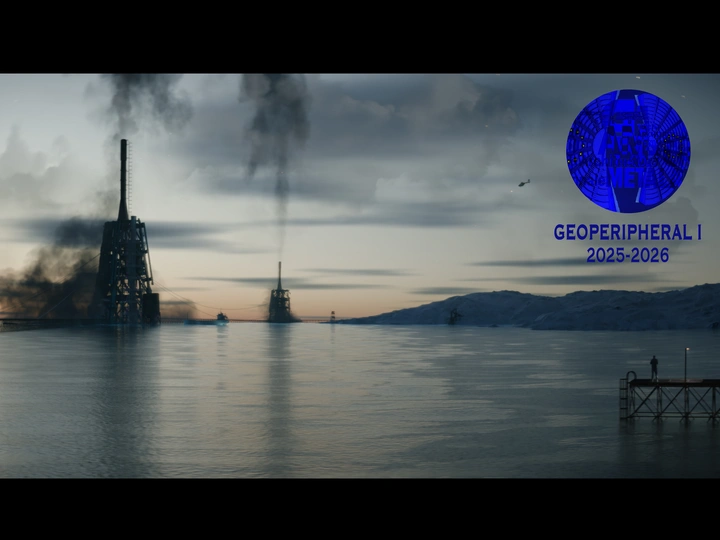Geoperiferal I

Daniel H. Pineda
Martin Eichler is an architect, researcher, and CGI artist whose work explores the intersection of digital reconstructions of archival material and visual storytelling. His practice blends elements of policy aesthetics, documentary cinema, and speculative animation, creating hybrid narratives that challenge conventional disciplinary boundaries.
He has collaborated as a 3D animator with Enar de Dios Rodríguez and Morgane Billuart, and is a member of the Megaworld.xyz collective.
In his academic-artistic practice, Martin develops visual essays such as Talent Keyhole, Ten after Ten (work-in-progress), and Alloy Reports (work-in-progress), created under the advisement of Ines Weizman.
Mag. art. Daniel Hüttler MA is an artist, curator and researcher. He is involved in an array of local as well as trans-national and cross-disciplinary projects that range from research groups and artist run spaces to experimental theory and performance networks. Daniel operates mostly in and as adO/Aptive an assemblage that foments critical thinking, potential action, communication and multiple perspectives through performative adaptions.
Daniel has organised symposia and discursive programs for the OFF-Biennale, Wiener Festwochen, Tanzquartier, the Department of Architechture of the Academy of Fine Arts, school & nadalokal.
As a duo, Daniel and Martin have organized the project Cultures of Spatial Investigations, which explored the potential of Open Source Intelligence (OSINT) as a critical method for artists and architects. Through a workshop and symposium, they brought together practitioners who use OSINT to surface narratives often ignored by mainstream media, asking how the processes of qualifying, sorting, and contextualizing open data can expand the interpretive tools of spatial practice. Their collaboration sits at the intersection of research, activism, and speculative design, dedicated to shaping new ways of seeing and understanding infrastructure.
During a research trip to the Cerro Prieto Geothermal Plant in Baja California in March 2025, we interviewed Dr.Ronald Spelz. He spoke about their research on the fault lines of the Gulf of California and speculated on the development of the first offshore geothermal plant in the world. This prompted us to ask: how would this technology, developed on and for the Californian fault line, impact the energy geopolitics of Europe?
Geothermal energy is becoming increasingly important for Europe’s energy mix. It plays a key role in reaching climate goals and renewable energy targets. Reports show that geothermal provides heating and cooling to over 16 million people and electricity to 11 million. Around 400 district heating systems are in operation. And there are over 150 geothermal plants, located mostly in Italy, Iceland, Turkey, and Greece.
While geothermal energy could reduce environmental impacts, we fear it may replicate existing structures of inequality—missing its disruptive potential. Today’s energy landscape is dominated by profit-driven multinational corporations. Their extractive logic often transfers value from the periphery to the core—making the construction of remoteness a first step in extraction. Our Project seeks to research and put into question this state of affairs via a speculative exercise, asking ourselves: How does the deployment of technologies for renewable energies replicate the proliferation of the center-to-periphery dynamics of Europe?
For our LINA application, we developed Geoperipheral I, the first offshore geothermal rig, deployed in the Black Sea and operated by a European conglomerate. In a place where the “borders” of the East and West meet, the Black Sea reflects today’s geopolitical and energetic shifts. The speculative rig becomes both a reflection on extractivist center- to-perifery dynamics and a platform for cross-disciplinary discussion about the futures that geothermal energy can and will create at different sites in Europe.